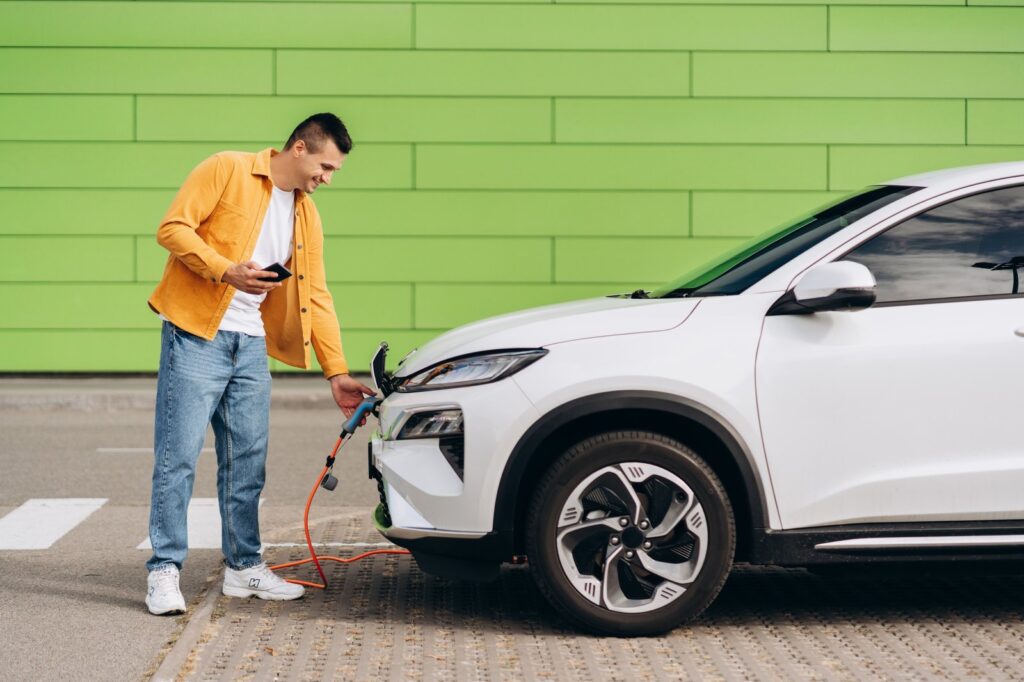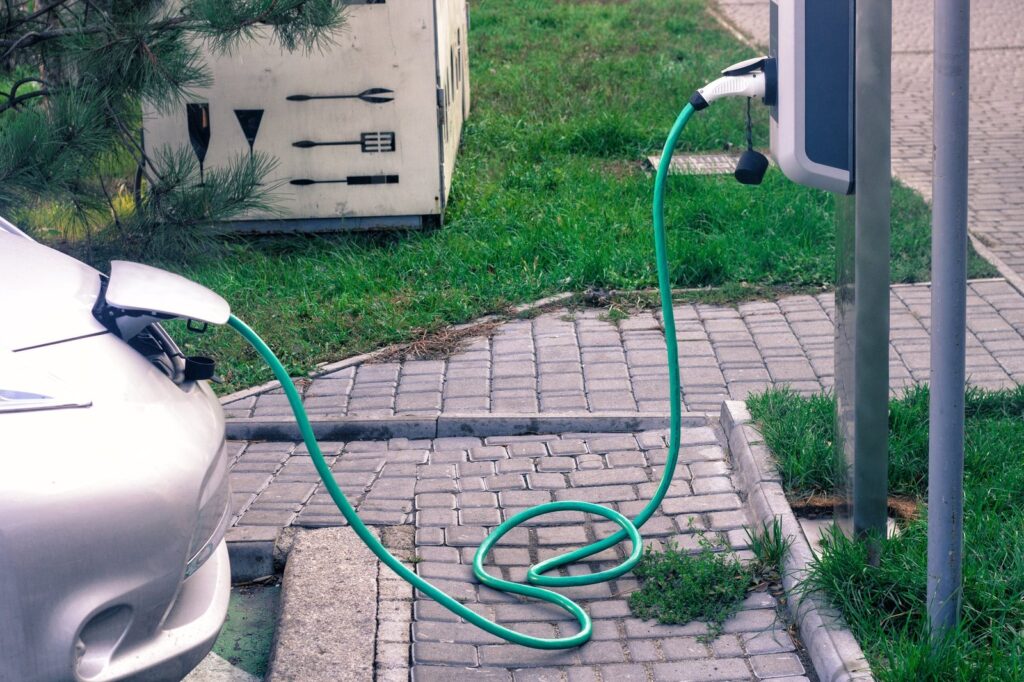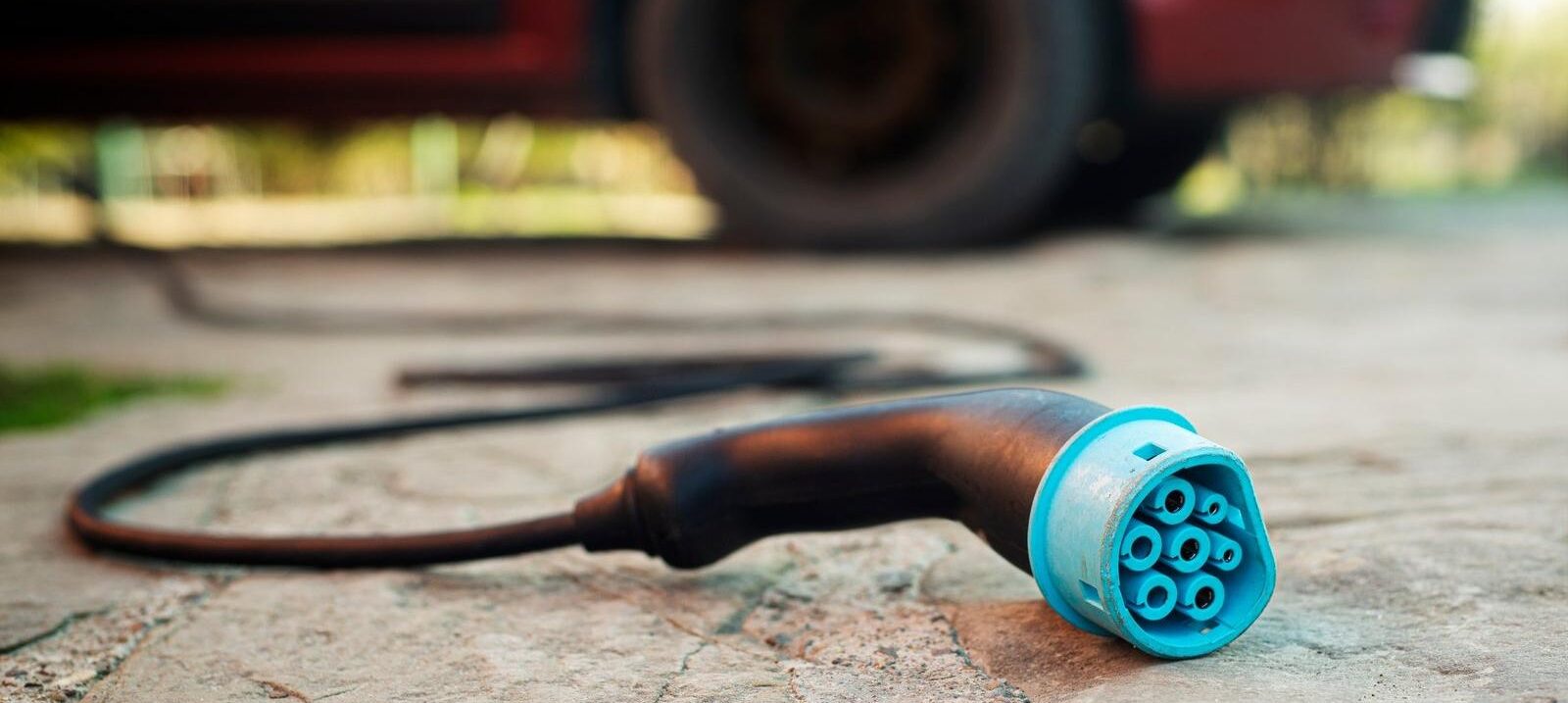For many friends who have just entered the field of electric vehicles, they often hear terms like “Level 1 charging pile”, “Level 2 charging pile”, and “Level 3 charging pile”, but they are not quite clear about the specific differences among them. Today, let’s take an in – depth look at the Level 1 charging pile, what it is exactly, and what characteristics and application scenarios it has.
What is a Level 1 Charger?
First of all, let’s understand the basic principles and related terms of electric vehicle charging. The electric vehicle charging system mainly consists of an electric vehicle supply equipment (EVSE) and an electric vehicle. The EVSE charger, which is what we usually call a charging pile, is responsible for transmitting the electrical energy from the power grid to the battery of the electric vehicle. During the charging process, different charging speeds and powers determine the charging efficiency and time.
The type of charging connector is also an important concept. Currently, there are various types of electric vehicle charging connectors on the market. They differ in physical structure, electrical performance, etc. Different connectors are suitable for electric vehicles of different brands and models. For example, common charging interfaces include CCS (Combined Charging System), CHAdeMO, Type 2, etc. The specifications and standards of these interfaces play a key role in the charging compatibility of electric vehicles.
The main characteristic of the Level 1 charging pile is that the charging speed is relatively slow, generally with a charging power between 1.4 – 1.9 kilowatts (kW). Taking an electric vehicle with a range of about 300 kilometers as an example, it may take 10 – 20 hours or even longer to fully charge using a Level 1 charging pile. Although the speed is slow, it has the advantages of convenience and low cost. Users can charge during night rest or long – term parking without affecting daily use.

The Charging Speed of the Level 1 Charger
The charging speed is generally calculated according to the increased driving mileage per hour, that is, what we often call “level 1 charger miles per hour”. Generally, a Level 1 charging pile can increase the range of an electric vehicle by 3 – 5 miles per hour. Compared with charging piles of other levels, this speed gap is quite obvious.
Compared with the Level 2 charger, the charging efficiency of the Level 1 charging pile is much lower. The Level 2 charger uses 240 – volt alternating current, and the power is generally between 3.3 – 22kW, with a significantly faster charging speed. It can increase the range of an electric vehicle by 10 – 60 miles per hour. From the perspective of “level 1 vs level 2 charging efficiency”, the advantages of the Level 2 charger are self – evident. It can replenish more power for the vehicle in a shorter time, greatly reducing the user’s waiting time, and is suitable for users with high requirements for charging time, such as in commercial parking lots, public charging stations, and other places.
The Level 3 charger, that is, what we usually call a fast – charging pile, has even more powerful charging capabilities. It uses direct current, and the power is usually above 50kW, and can even reach several hundred kilowatts. The Level 3 charging pile has an extremely fast charging speed and can replenish a large amount of power for an electric vehicle in a short time. Generally, it can charge the electric vehicle from a low level to about 80% within 30 minutes. However, the construction and operation costs of the Level 3 charging pile are very high, which also leads to relatively high charging fees.

The Cost – Effectiveness of the Level 1 Charger
From the perspective of economic benefits, the Level 1 charging pile also has outstanding cost – use advantages. First of all, the equipment cost of the Level 1 charging pile itself is relatively low, generally ranging from a few hundred yuan to more than a thousand yuan, which enables most users to easily purchase it. Secondly, since it uses ordinary household electricity, the electricity bill is calculated according to the residential electricity standard, which is relatively cheap. Moreover, installing a Level 1 charging pile hardly requires additional costs, and only a common three – pin socket is needed.
In contrast, the equipment cost of the Level 2 charging pile is usually several thousand yuan, and professional personnel are required to carry out wiring and installation during installation, which will generate certain installation costs. The overall cost is much higher than that of the Level 1 charging pile. The cost of the Level 3 charging pile is even higher. Not only is the equipment expensive, but the power grid also needs to be upgraded and transformed during the construction process, with huge investment. From the comparison of “level 1 vs level 2 vs level 3 charging cost”, it can be clearly seen that the Level 1 charging pile has a great advantage in terms of cost.
Comparison between the Level 1 Charger and the Level 2 Charger
The Level 2 charger uses a 240 – volt power supply, and the power is usually between 7.2 kW and 19.2 kW. Compared with the Level 1 charger, the Level 2 charger has a faster charging speed and is suitable for users who need fast charging.
| Characteristics | Level 1 Charger | Level 2 Charger |
|---|---|---|
| Voltage | 120V | 240V |
| Power | 1.4 kW | 7.2 kW – 19.2 kW |
| Charging Speed | 2 – 5 miles per hour | 10 – 60 miles per |
| hourInstallation Cost | None | $500 – $2000 |
| Applicable | ScenariosDaily home charging | Homes, commercial places |
Comparison between the Level 1 Charger and the Level 3 Charger
The Level 3 charger, also known as DC Fast Charger, uses a 480 – volt power supply, and the power is usually between 50 kW and 350 kW. It can charge an electric vehicle to 80% within 30 minutes and is suitable for long – distance driving and commercial places.
| Characteristics | Level 1 Charger | Level 3 Charger |
|---|---|---|
| Voltage | 120V | 480V |
| Power | 1.4 kW | 50 kW – 350 kW |
| Charging Speed | 2 – 5 miles per hour | 200 -300 miles per |
| hourInstallation Cost | None | Tens of thousands of dollars |
| Applicable | ScenariosDaily home charging | Highways, commercial places |

Applicable Scenarios of the Level 1 Charger
Due to its slow charging speed but convenient installation and low cost, the Level 1 charging pile has unique application scenarios. For home users, if the daily mileage of the vehicle is not very high and there is a fixed parking space for night parking, then using a Level 1 charging pile to charge at night is very suitable. This can not only meet the daily power needs of the vehicle but also will not have much impact on life.
In some remote areas or places where there are no conditions to build large – scale public charging piles, the Level 1 charging pile can also be used as an emergency charging device. When the power of an electric vehicle is insufficient during driving, if you can temporarily find a place where a Level 1 charging pile can be used for charging, although it takes a long time to wait, at least it can ensure that the vehicle can continue to drive.
In addition, for some users who rent electric vehicles or use electric vehicles temporarily, the convenience of the Level 1 charging pile also enables them to charge the vehicle conveniently when there is no dedicated charging pile.
The Level 1 Charging Pile Used in Combination with Other Equipment
In actual use, the Level 1 charging pile can also be used in combination with some other equipment to improve charging convenience. For example, some users will use an extension cord for car battery charger to increase charging flexibility, so that the vehicle can be charged at a place far from the socket. However, it should be noted that when using an extension cord, products that meet safety standards should be selected to avoid safety accidents caused by problems such as excessive current.
In addition, some portable level 1 ev chargers are also very popular among many users. This kind of charging pile is small in size and convenient to carry. Users can put it in the car and charge the vehicle at any time when there is a power socket. Whether on a trip or at a temporary parking place, it can provide charging guarantee for electric vehicles.

Choosing the Right Electric Vehicle Charging Equipment
For electric vehicle users, choosing the right charging equipment is of great importance. If your daily travel mileage is short and you have a fixed parking place at night, then the Level 1 charging pile can fully meet your needs, and its low cost and convenient installation are great advantages. However, if your travel needs are large and you have high requirements for charging time, then the Level 2 charging pile or the Level 3 charging pile may be more suitable for you.
As a manufacturer of electric vehicle charging equipment, we provide a variety of charging pile products and customized services, including Level 1 charging piles, Level 2 charging piles, and Level 3 charging piles, to meet the needs of different users. Our charging pile products meet strict quality standards, and have the characteristics of high efficiency, safety, and stability. At the same time, we also provide professional installation and after – sales services to ensure that you have no worries during use.
If you are interested in our electric vehicle charging equipment, whether you are a trader who wants to cooperate or a user who wants to learn more product information and purchase matters, you can consult us immediately. Our professional team will provide you with detailed answers and high – quality services. We look forward to working with you to jointly promote the development of the electric vehicle charging industry.
Conclusion
As a basic device in the field of electric vehicle charging, although the Level 1 charging pile is not as fast as the Level 2 and Level 3 charging piles in terms of charging speed, its convenience, low cost, and practicality in specific scenarios enable it to occupy an important position in the electric vehicle charging market. Through an in – depth understanding of the Level 1 charging pile, we can better choose the right charging method and equipment according to our own needs.
We hope this article can help you have a more comprehensive understanding of the Level 1 charging pile. If you still have any questions or need to further understand the knowledge related to electric vehicle charging, welcome to follow the BLOG section of our website at any time. We will continue to provide you with more valuable content. At the same time, don’t forget that if you have cooperation intentions or purchase needs for our products, consult us immediately and start your green travel charging journey.

